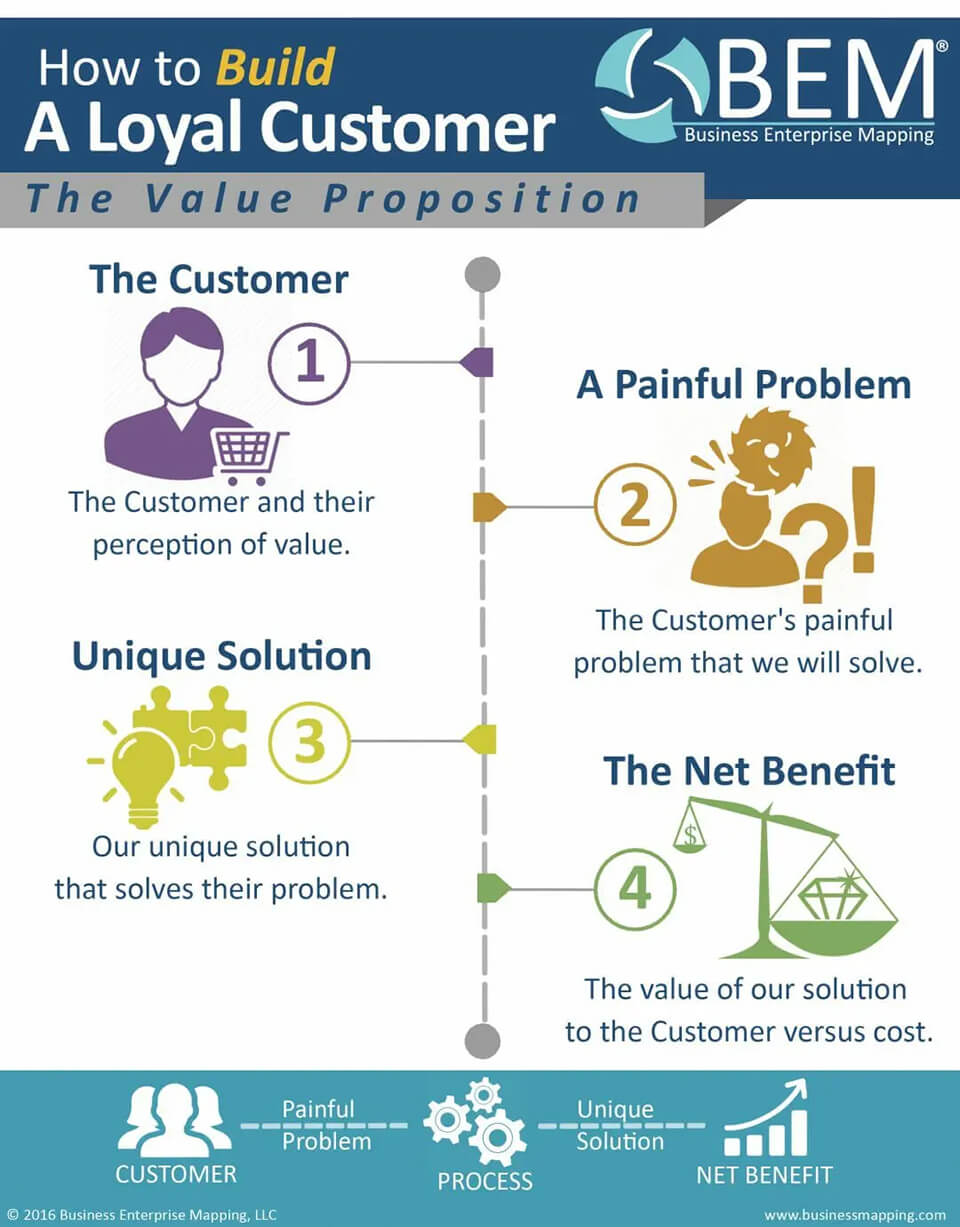The value proposition is the core purpose of the process. It’s the benefits the products or services offer to internal and external customers and what differentiates organizations from their competitors. Once defined, the value proposition drives each process to meet customer goals. If customers are satisfied, they are more likely to be loyal.

The value proposition delivers customer loyalty.
Organizations often think they know who their customers are and what they want but they aren’t always right. Defining customers and identifying processes isn’t enough to make customers loyal. You must understand the value your product or service brings to customers; it’s this value that creates customer loyalty.
1. Get to know the customer
After identifying who your customers are and how your products or services solve a problem or satisfy a need, develop a customer profile. In just a sentence or two, describe common traits or characteristics for the customer whose problem the process solves. If the process serves more than one customer, a unique customer profile should be developed for each customer type.
2. Understand the customer’s problem, want or need.
Do you understand the level of need your customers have for the solution the process provides? The need is the painful problem to be solved by the process. It can also be stated as a strong want or need such as wanting a state of the art cellphone or needing a car to get to work. The more painful the unsolved customer problem or the greater the customer want or need, the more important the process is to the customer and the better the opportunity to develop and serve a loyal customer.
3. Define the Customer Value Package (CVP) that solves the problem.
The CVP is the output that the process provides to fulfill its purpose. It is expressed in four dimensions including Solution, Responsiveness, Economics, and Relationship. The process goal should be to provide a CVP that solves a customer’s painful problem or satisfies a want or need in a way that delights the customer without taxing organizational resources.
4. Provide a valuable net benefit from the customer's perspective.
Value is perceived solely in the eyes of the customer. There’s no customer loyalty if the customer doesn’t see value in the process (even if the process owner sees the value). What is it worth to the customer to solve his painful problem or satisfy his want or need? This value can be expressed in many ways, such as reducing waste, increasing revenues, restoring good health, saving time, improving skills, having fun, etc.
The benefit of the CVP must be weighed by the customer against its cost and also compared to other options available to the customer. While a customer may desire the CVP solution provided by the process, the solution economics could otherwise preclude the customer from purchasing that solution. Alternatively, another solution that isn’t as good may be more affordable and therefore be more attractive to the customer. Very few solutions are desired at any cost.
Organizations that clearly define customers and understand the value proposition of their business processes are more likely to create customer loyalty than those that don't.
Further Reading: BUSINESS PROCESS IMPROVEMENT

